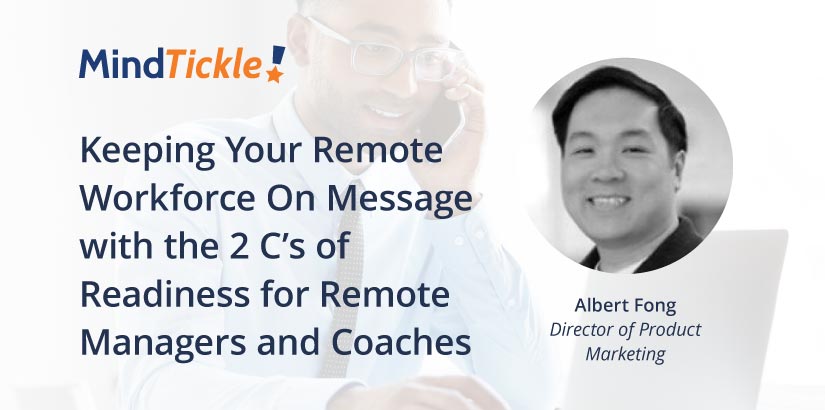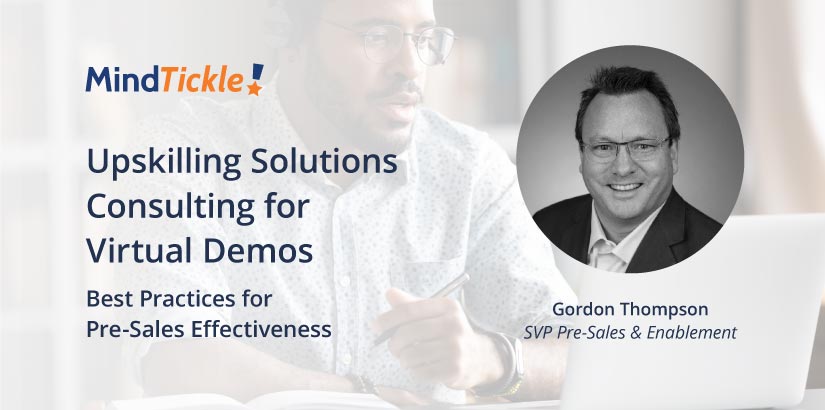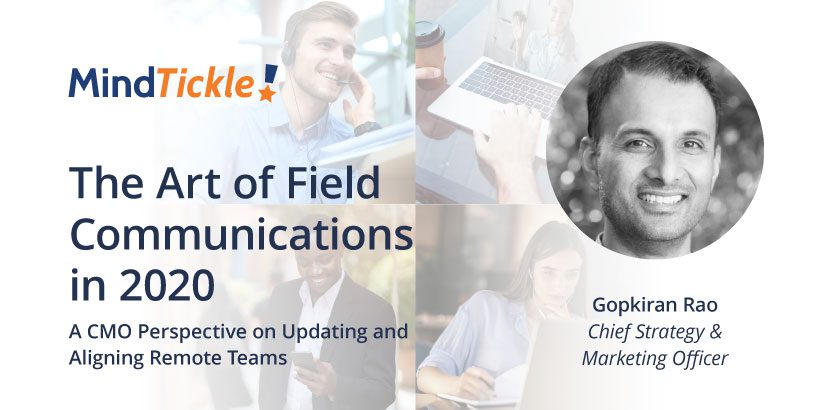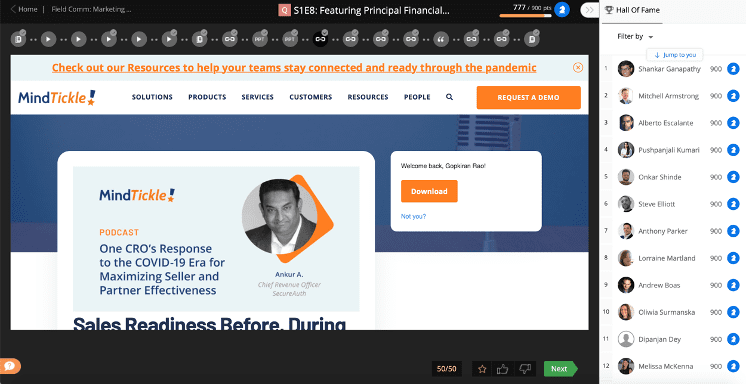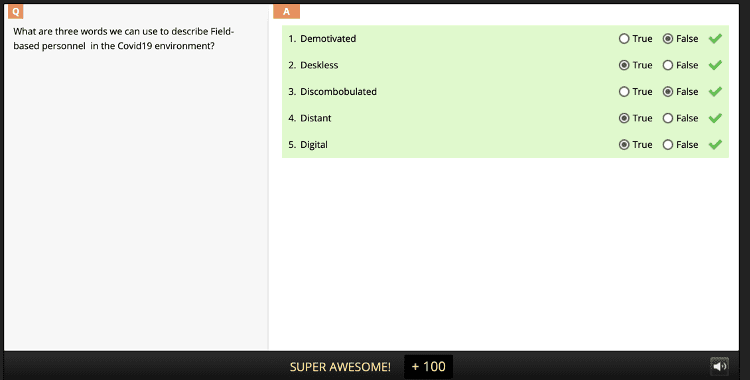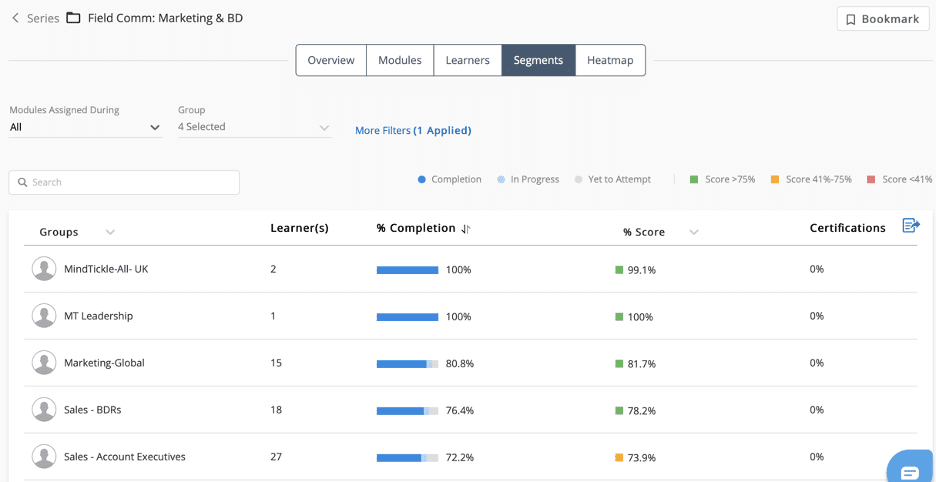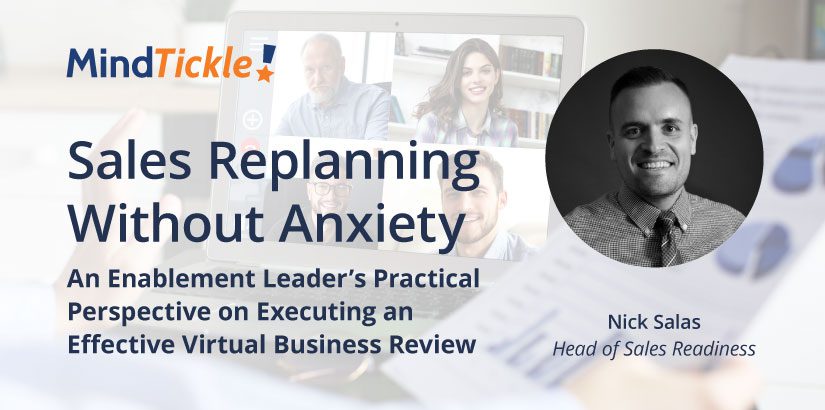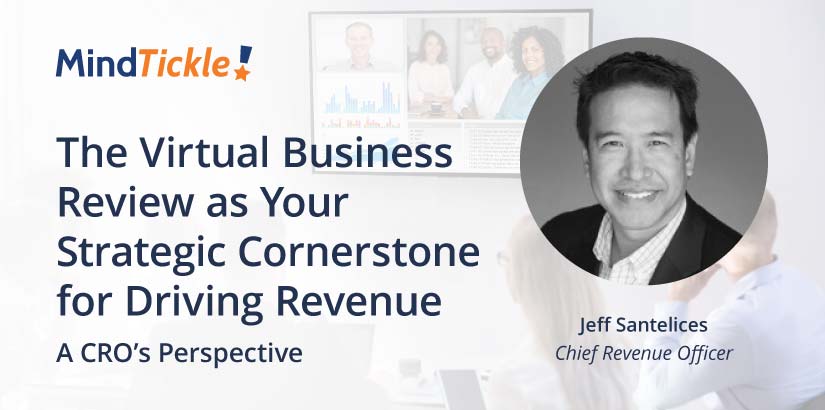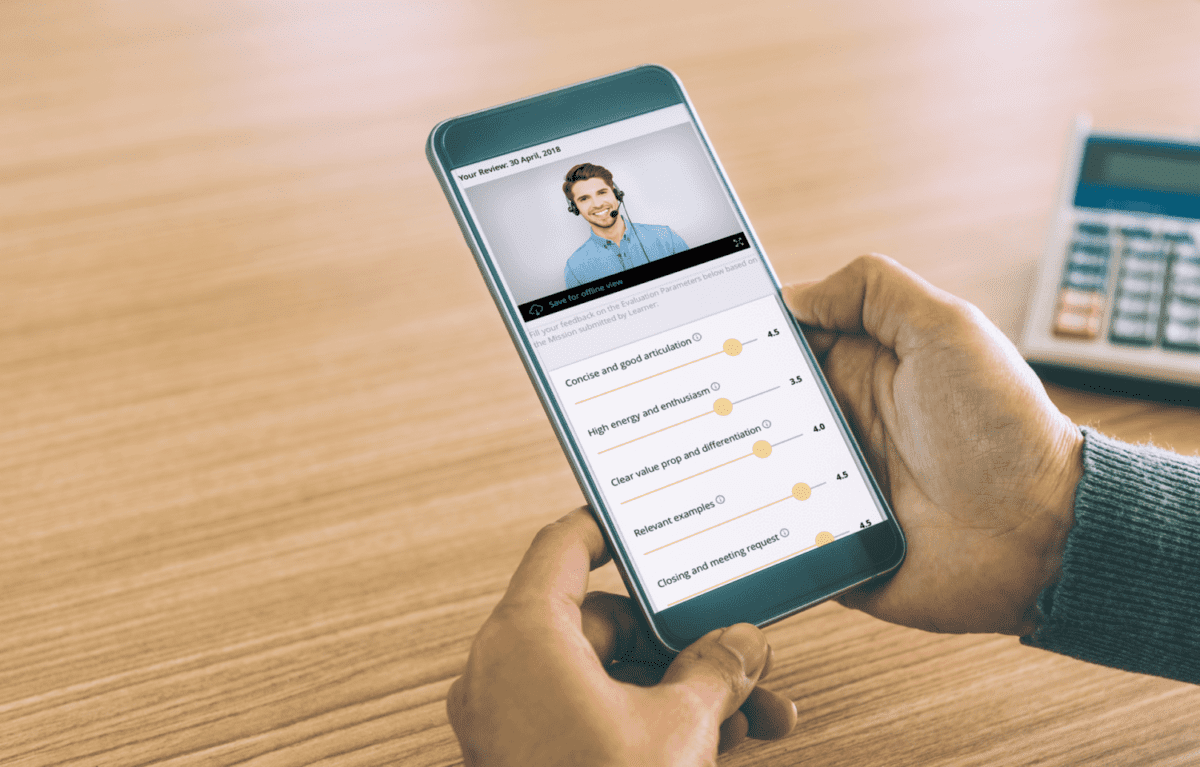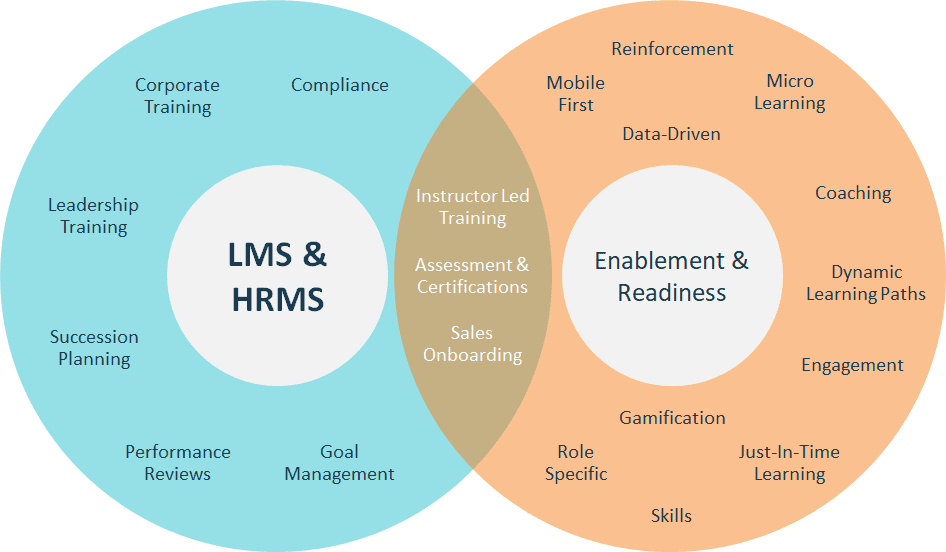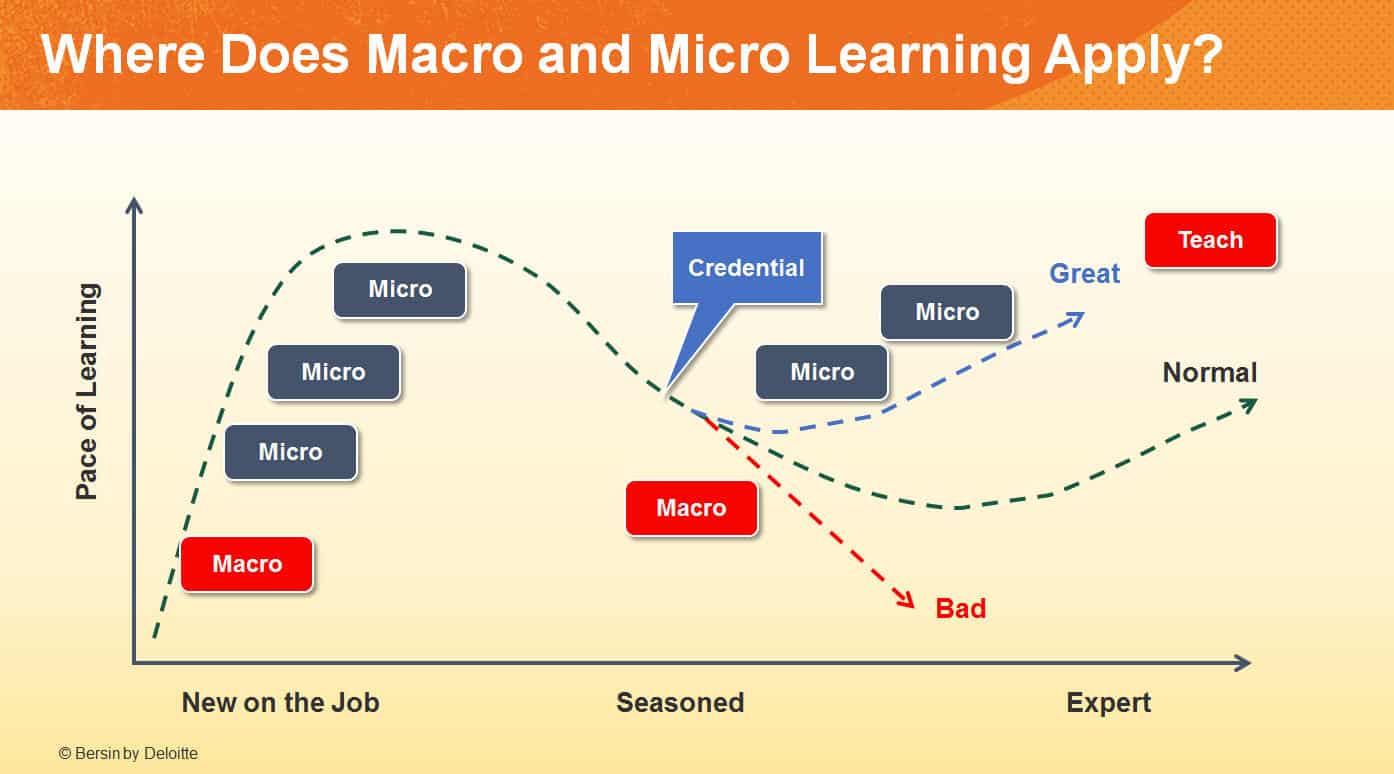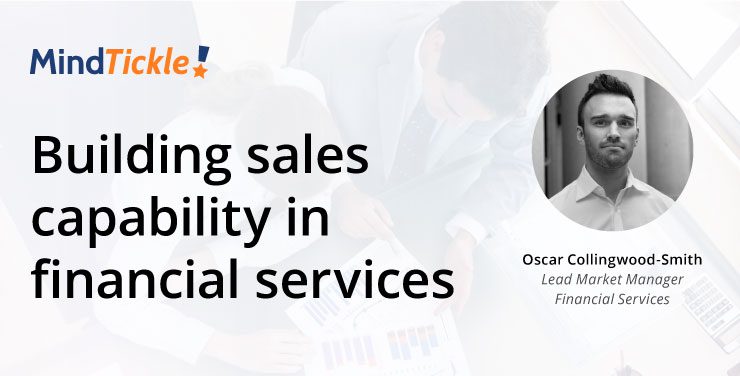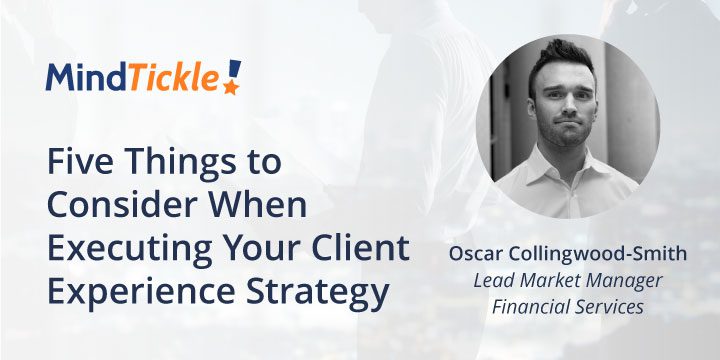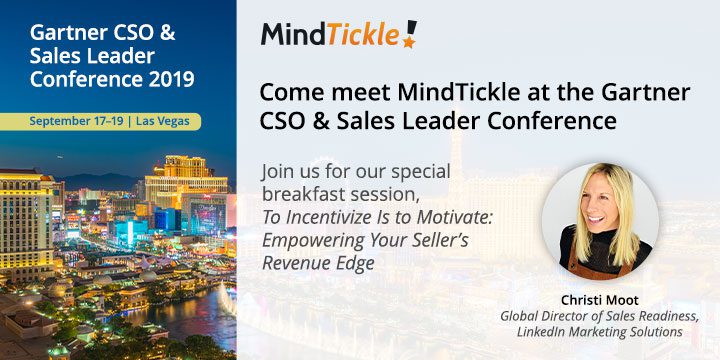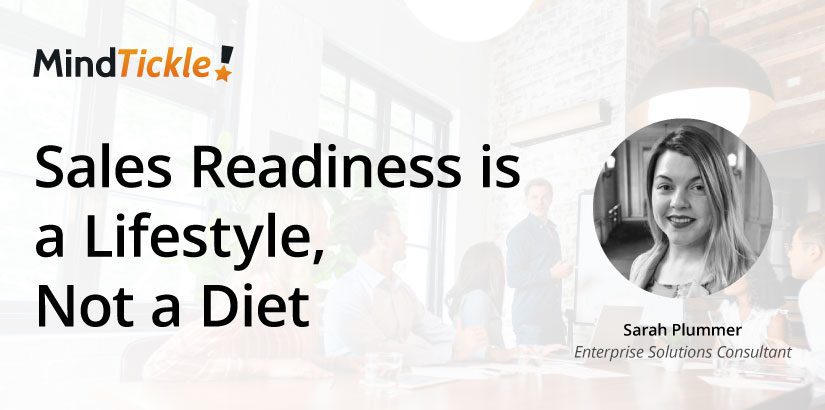Keeping Your Remote Workforce On Message with the 2 C’s of Readiness for Remote Managers and Coaches
A remote workforce can be difficult to navigate especially for sales enablement leaders. And as some employees begin to return to an office, the ‘new normal’ of a hybrid environment will continue to increase these complexities. Regardless of location, sales enablement leaders must keep customer-facing teams actively engaged. In this context, the 2 C’s of readiness enablement, Communication and Coaching are critical to get right.
Personalizing and adapting two-way communication, enabling new and upgraded remote selling skills while enabling visibility and the ability to intervene with proactive coaching (even at a distance) is a North Star for the emerging normal. Although challenging, working remotely is no excuse to pull back on training and coaching investments because it can be done just as well as in the office.
Before further discussing how to effectively facilitate remote training and coaching, sales enablement leaders must first make certain that all pertinent information and content are specific to the markets, segments and customers that your team is contacting. It needs to be closely aligned with the steps and activities sales reps execute as part of the process. Finally, it must be in line with the sales methodology and expectations for customer-facing interactions and be designed to deliver visibility on delivery, engagement, usage and satisfaction for managers. This last point is critical as remote coaching programs and initiatives become critical in the emerging virtual everywhere environment. While self-service and 2-ways communications are a basic first principle for remote enablement, ensuring managers participate as recipients and coaches ensures that updates are resulting in updated teams. .
With that in place, let’s dive into how to ensure sales enablement delivers value for remote workers. First, every content asset and communication designed to align with and keep the sales force highly engaged must deliver ROI. Enabling this requires the following:
- Frequent push and pull-based, personalized communications sent in a rep’s preferred channel that will draw greater interest in training. For example, communications that pop up in the flow of a sales rep’s daily work life — such as in an email or app, through the Salesforce dashboard or other CRM, or in newsletters — drive higher engagement.
- Reps must be able to consume content on their own schedule and modality. Never has this been more important than now, with an often-unpredictable work environment and work hours. Understanding engagement trends – what modules or learning is most revisited, offline vs. online consumption trends, mobile minutes, responsiveness to digital reminders are just a few of the compelling metrics afforded by modern platforms that should be embraced by managers and executives for coaching engagement as much as administrators of platforms.
- Learning delivered in different formats caters to different learning styles. Microlearning in the form of videos, polls, quizzes, podcasts and gamified content tends to drive higher consumption and retention among reps. Video is also a powerful tool for practicing and polishing pitches through guided role play. With it, reps can practice interacting with customers in simulated sales scenarios to improve their presentations and get real-time feedback from managers or coworkers.
- Don’t overlook remote coaching engagement. With regular video coaching sessions and use of shared competency assessments, reps and managers can prioritize, build and track skills incrementally while also providing valuable inputs to readiness and enablement teams. And, when it has structure and regular cadence, virtual coaching can be as valuable as in-person coaching while being cost and commute efficient.
Keeping remote employees engaged and active isn’t a challenge relegated only to sales enablement leaders. CMOs and CROs alike are indirectly impacted by sales enablement’s success too, because hitting their numbers depends on reps’ active engagement with sales training. With CMOs heavily involved in driving leads through the sales pipeline, they must engage, motivate and align customer-facing teams with new, innovative messaging, the latest content and other assets, and new and ongoing campaigns. CROs need to equally be involved in engagement, adoption and effective tactics in order to achieve revenue targets.
With that in mind, CMOs and CROs can help their team stay aligned in this remote setting and confirm that they’re retaining information in the following ways.
- Monitor updates in activity logs in the CRM
- Conduct one-on-ones with managers and engagement reporting
- Gather feedback from the field
- Measure the amount of content consumption
By monitoring whether their teams are seeing an uptick in deal velocity across stages and over time, driving better engagement with buyers, and securing more ‘solutioning’ activities like workshops and proofs of concept, CMOs and CROs can identify problem areas and develop plans of action to address them. And finally, by maintaining open lines of communication with marketing, revenue and marketing leaders can ensure the most impactful content is pushed out in the most effective ways. After all, we know what messaging will resonate with which channels to drive revenue.
It’s unclear when we’ll be able to get back to business as usual, but that doesn’t mean that sales training and coaching initiatives should be put on hold. In fact, the 2 C’s of readiness enablement – Communication and Coaching – are more important than ever to ensure that sales teams are engaged and on message. Customer-facing employees can keep some sense of normalcy and continuity in their day-to-day by continuing to develop their skill sets from home, the office or a combination of both. Companies with an understanding that training, coaching and microlearning are the key to driving consistent customer engagement and messaging will be poised for success in today’s ‘new normal’.

